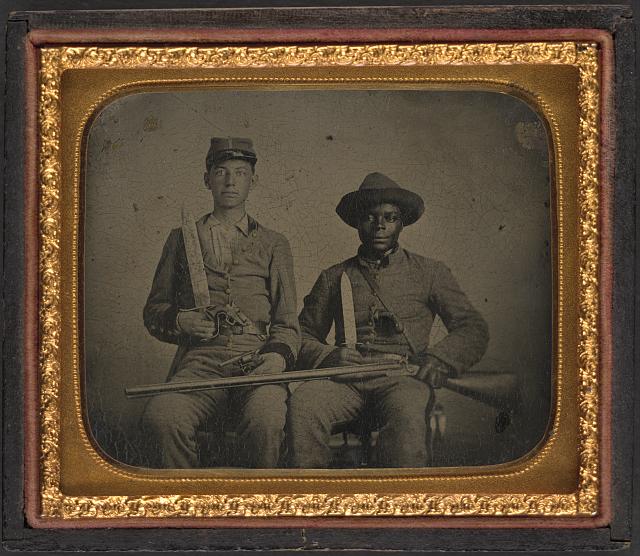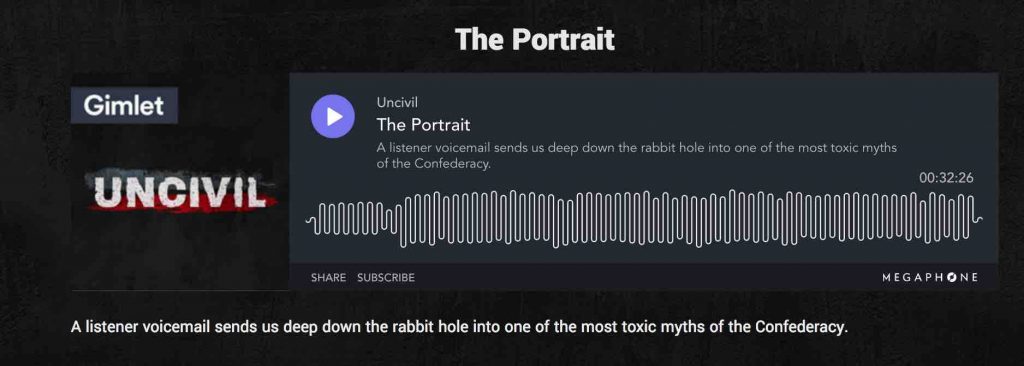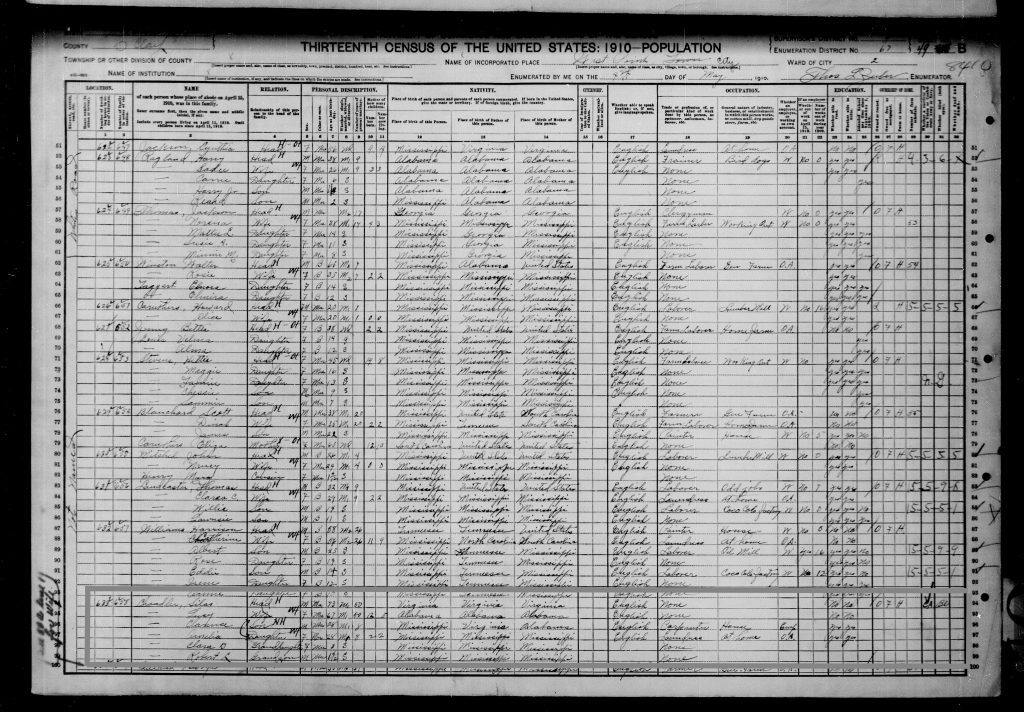Uncivil: Episode 10: The Portrait

I recently discovered the podcast Uncivil (Gimlet Media) in searching for significant events for discussion on the upcoming episode of Black ProGen Live. Right now, Uncivil consists of 10 episodes so far, spanning different episodes in nineteenth century US Civil War history The latest show ( Ep. 10 podcast, released 27 December 2017) dealt with the myth of the Black Confederate soldier.
Uncivil is hosted by Chenjerai Kumanyika, author, journalist, and professor of journalism and communications at Rutgers University, and Jack Hitt, a Peabody Award-winning journalist, author and radio producer. The programs intend to bring “stories that were left out of the official history of the Civil War, ransacks America’s past and takes on the history you grew up with.” Indeed, we need these reexaminations, and it’s great to have this material available to think with.

The trajectory of this particular story followed an arc that began with unpacking of historical knowledge via a young caller to the show, and culminates with the descendants of Silas Chandler (1 Jan 1837-Sept 1919). They discovered their ancestor being discussed in a photograph brought to Antiques Roadshow in 2009. During the program, the moment to explain enslavement was lost, the myth took over, leading to a division of the Sons of Confederate Veterans placing a metal cross on his grave in Mississippi, and stealing Silas Chandler’s image by reproducing it on various surfaces from t-shirts to films, prints and photos all proclaiming this evidence of participation.
The Weight of Images & Problematic Histories
The photograph is a tintype, and close up, its surface reveals a cracked emulsion with an ornate copper colored metal edge. Notable details are the position of the two men, side by side, visually composed to emphasize their inequality. The younger Andrew Chandler’s hips were elevated to lend height well above Silas, whose seat is tilted back at the hips to make him seem shorter than his slave owner’s. To read Silas’ smile is to read a face weary of waiting for a moment, if not the war and slavery itself, to be over.
Sites that proclaim that they have ‘evidence’ of Black Confederate soldiers, and one features a painting of a Civil War battlefield, no location just a battle scene. Just off center, is a kneeling black man holding the head of a white man wearing the gray uniform of the South. The military serviceman is injured and bleeding into a large handkerchief. It’s white surface creates an area that visually marks and makes central for the viewer, the tableau with a enslaved adult man at the center. He has no arms no gun, no rifle, he simply serves and tends to the white master, an ideological composition that seeks to deny historical reality by providing a romanticized tableau. This same idea was extended to the photograph, a plain effort to define Silas Chandler as a soldier. He was not.
As Myra Chandler Sampson (Silas Chandler’s great-granddaughter) and Kevin M Levin note, “Interest in Silas’ military career has been fueled by a desire to affirm that Southern blacks were just as eager as whites to fight back against the invaders— an attempt to validate the belief that the war did not ignite over slavery but over predatory Northern acts.” They go on to ask: So what role did Silas really play in the war, and why did he choose to fight for the South—if he actually did? One thing is clear: Ever since the SCV posthumously ‘honored’ Silas, an enslaved body servant who accompanied his white master into service, accounts of black Confederate troops have surged in popularity, with some now claiming that upwards of 100,000 blacks fought willingly in Southern ranks.
While there were a small number of enslaved black men who served in the Confederacy, but they comprised less than 1% of those who served. A 2015 article in The Root, goes into further details about this controversy. In a nutshell: “How many supported it? No one knows precisely. But by drawing on these scholars and focusing on sources written or published during the war, I estimate that between 3,000 and 6,000 served as Confederate soldiers. Another 100,000 or so blacks, mostly slaves, supported the Confederacy as laborers, servants and teamsters. They built roads, batteries and fortifications; manned munitions factories—essentially did the Confederacy’s dirty work.” Note that African Americans were unable to enlist in the Confederacy until an order was issued in March 1865, the last month of the war. In contrast, almost 187,000 African Americans joined the Union Army over the course of the war, with numbers rising for the last two years.
Details That Matter: The move towards freedom
Why does the story matter? Because this was a myth fed to fourth grade children in social studies texts and museum exhibits organized by descendants of the confederacy. There’s potential for these scenarios to be incorporated and disseminated into some family histories and genealogies, effectively casting the shadow of confederate myth over a lineage while declaring a white nationalist identity.
Silas was born into slavery on 1 January 1837 in Virginia and two years later, his slaveholder, Roy Chandler moved him and 39 other enslaved people along with the Chandler family to Palo Alto in Clay County, Mississippi. As an adult, once freed, Silas kept his owner’s surname.
Roy Chandler claimed a land grant after an 1831 treaty that displaced thousands of American Indian peoples in the area, and gave white settlers some 11 million acres of state land. Silas became the body servant to Roy Chandler’s son, Andrew born in 1844. Silas sits alongside Sergeant Andrew Chandler, the white man in uniform in the photograph. Yet the fear of armed black men ran rife through the Confederacy, and they supplied no guns, nor permitted combat roles for African Americans until the final weeks of the war; add the fact that thousands of African Americans were supportive of the North, to the point of escaping to Federal lines, and the desperation to legitimize the myth of participation becomes evident.
Silas weighed his situation, and “likely gained even more freedom of movement when Andrew was wounded and captured at Shiloh in April 1862 and imprisoned… Deemed human property he was legally bound to Andrew.” Although Silas returned and helped his master return home after injuries at the Battle of Chickamauga. Extant correspondence shows Silas’ return would be to his wife and newborn child. Silas served again in 1864, going with Andrew’s younger brother Benjamin, who served in the 9th Mississippi Calvary.
Why Silas Chandler’s Story Matters
Silas Chandler was a carpenter and helped found the first black church, Mount Hermon Baptist Church in West Point, Mississippi. He married Lucy Garvin about 1860, “daughter of a house slave named Polly and an unnamed plantation owner.” They had 12 children, 5 who survived to adulthood, and one son was the great-grandfather of Myra Chandler Sampson. Silas lived to appear in the 1910 US Federal Census, where a glimpse of the life he built with his wife Lucy can be seen, some nine years before he died. In contrast, Palo Alto, MI, where he first lived in bondage, became a ghost town. It’s worth noting that the Wikipedia article on Palo Alto mentions that “In 1876, Palo Alto was the site of an incident in which a group of heavily armed white men brought a piece of field artillery and broke up a meeting of the Republican Club in order to suppress black voters.” This is just one of myriad examples of retaliation committed against people of African descent that numerous whites committed after Reconstruction and the passage of ‘black codes’ in 1865 and 1866. Despite their efforts, Silas Chandler raised his family and contributed to his community.


What I appreciate about the Uncivil podcast is the content, and the website’s clear layout and availability of transcripts, allowing one to easily search for subjects. As an adjunct to genealogical study, it helps bring to the table some of the issues that POC genealogists and their families face when working on family lines that head straight into terrain already complicated by locating material. Understanding documentary context helps with document analysis, and depending on one’s location, its easy to see how details can be used and misused to serve very different needs. Hearing voices waver, be insistent, vulnerable or firm, reminds one that this history still matters enormously. The events in Charlottesville last summer speaks to the urgency of projects that seek to unpack the historical pain and experience of those populations born or taken into slavery who made this country possible from its inception, and this foundational fact can no longer be ignored. We are still navigating this past.
In this case, the attempt to hijack family history for an ideological purpose was foiled, precisely because these descendants pressed on to tell their stories, writing, broadcasting and, Myra Chandler Sampson continues to speak truth to power. May we all find the strength to bring our ancestors into the light.
References
“The Portrait.” 27 Dec 2017. Uncivil Gimlet Media. Podcast. http://uncivil.show/
“Silas Chandler.” Wikipedia. https://en.wikipedia.org/wiki/Silas_Chandler Accessed 8 Jan 2018.
Myra Chandler Sampson and Kevin M Levin, “The Loyalty of Silas Chandler.” Civil War Times, Feb 2012, 30-35. https://www.academia.edu/5196718/The_Loyalty_of_Silas_Chandler Accessed 5 Jan 2018.
“Yes There Were Black Confederates. Here’s Why.” The Root, 20 Jan 2015. https://www.theroot.com/yes-there-were-black-confederates-here-s-why-1790858546 Accessed 8 Jan 2018.
“Military History of African Americans in the American Civil War.” Wikipedia, https://en.wikipedia.org/wiki/Military_history_of_African_Americans_in_the_American_Civil_War Accessed 8 Jan 2018.
“United States Census, 1910,” database with images, FamilySearch (https://familysearch.org/ark:/61903/3:1:33S7-9RVX-DC?cc=1727033&wc=QZZW-XXL%3A133641901%2C134134901%2C135097501%2C1589089008 : 24 June 2017), Mississippi > Clay > West Point Ward 2 > ED 67 > image 10 of 10; citing NARA microfilm publication T624 (Washington, D.C.: National Archives and Records Administration, n.d.).
“Palo Alto, Mississippi.” Wikipedia. https://en.wikipedia.org/wiki/Palo_Alto,_Mississippi Accessed 8 Jan 2018.
“Reconstruction.” https://www.nps.gov/civilwar/reconstruction.htm Accessed 8 Jan 2018.
Discover more from Latino Genealogy & Beyond
Subscribe to get the latest posts sent to your email.

Corrections, I am Myra Chandler Sampson not the granddaughter but the great granddaughter of Silas Chandler. and Silas had 8 children who lived to adulthood, They were in birth order: William Henry, Clarence Ruffus, Charlie, Robert, (,my grandfather George,- Ada), Mamie, Willie B., and Sarah. Thank you for your interest in supporting the true facts about my ancestor.
Myra, many thanks for pointing that out! Corrections made– and thank you for the information on Silas Chandler’s children, and more importantly, for all the work you do to speak about your ancestor. It’s a tremendous story in its own right.
Thanks for the correction Myra. Your brother Cyril Chandler